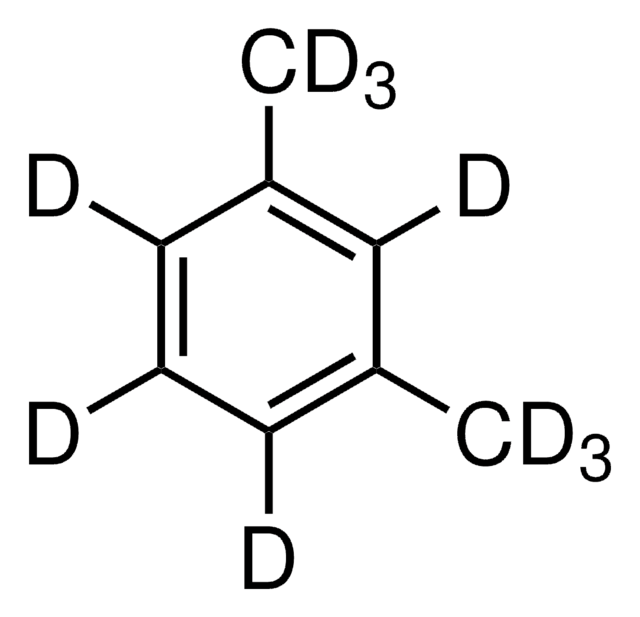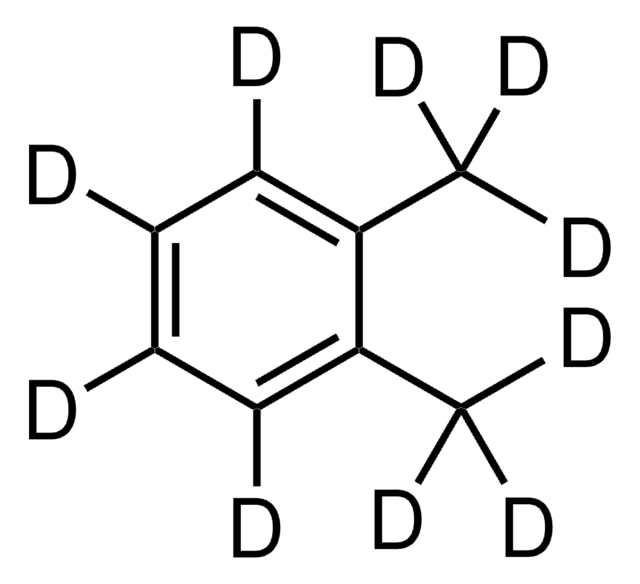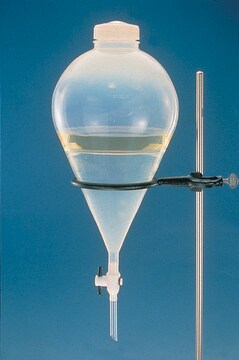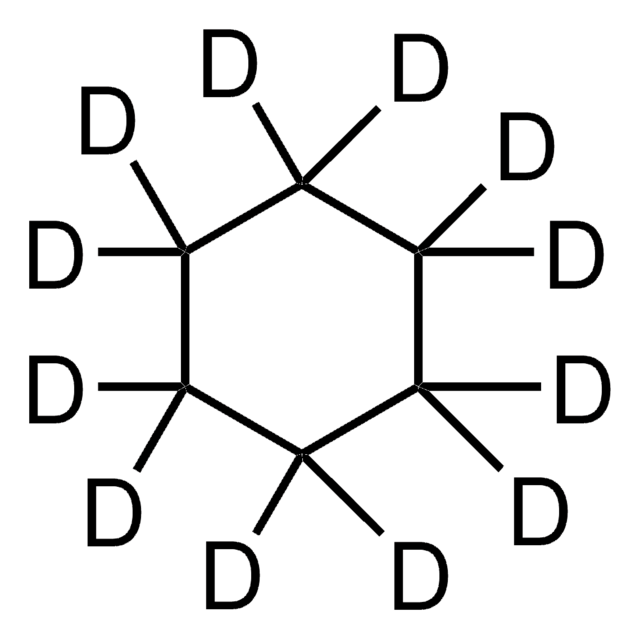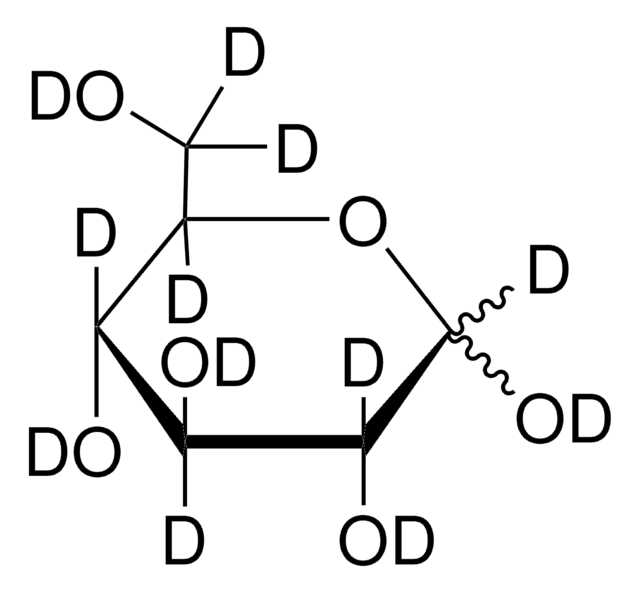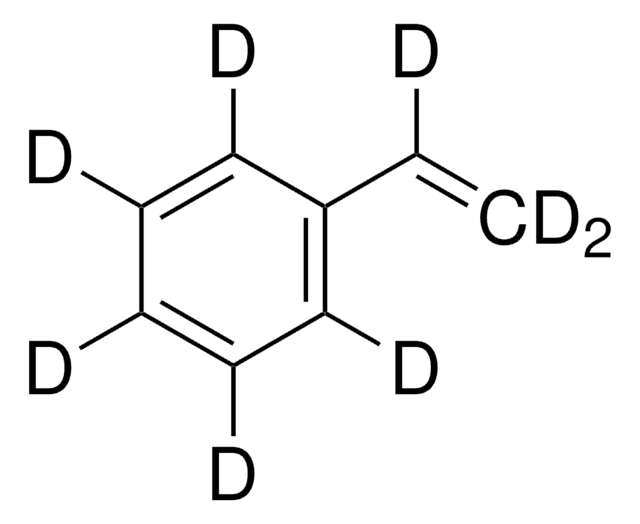Key Documents
175927
p-Xylene-d10
99 atom % D
Synonim(y):
1,4-Dimethylbenzene-d10
About This Item
Polecane produkty
czystość izotopowa
99 atom % D
Poziom jakości
Próba
≥98.5%
Postać
liquid
granice wybuchowości
0.34-6.3 % (lit.)
metody
GC/MS: suitable
NMR: suitable
współczynnik refrakcji
n20/D 1.492 (lit.)
tw
135 °C (lit.)
mp
13 °C (lit.)
gęstość
0.948 g/mL at 25 °C (lit.)
przesunięcie masy
M+10
ciąg SMILES
[2H]c1c([2H])c(c([2H])c([2H])c1C([2H])([2H])[2H])C([2H])([2H])[2H]
InChI
1S/C8H10/c1-7-3-5-8(2)6-4-7/h3-6H,1-2H3/i1D3,2D3,3D,4D,5D,6D
Klucz InChI
URLKBWYHVLBVBO-ZGYYUIRESA-N
Opis ogólny
Zastosowanie
wyposażenie dodatkowe
Hasło ostrzegawcze
Danger
Zwroty wskazujące rodzaj zagrożenia
Zwroty wskazujące środki ostrożności
Klasyfikacja zagrożeń
Acute Tox. 4 Dermal - Acute Tox. 4 Inhalation - Aquatic Chronic 3 - Asp. Tox. 1 - Eye Irrit. 2 - Flam. Liq. 3 - Skin Irrit. 2 - STOT SE 3
Organy docelowe
Respiratory system
Kod klasy składowania
3 - Flammable liquids
Klasa zagrożenia wodnego (WGK)
WGK 2
Temperatura zapłonu (°F)
77.0 °F - closed cup
Temperatura zapłonu (°C)
25.00 °C - closed cup
Wybierz jedną z najnowszych wersji:
Masz już ten produkt?
Dokumenty związane z niedawno zakupionymi produktami zostały zamieszczone w Bibliotece dokumentów.
Klienci oglądali również te produkty
Nasz zespół naukowców ma doświadczenie we wszystkich obszarach badań, w tym w naukach przyrodniczych, materiałoznawstwie, syntezie chemicznej, chromatografii, analityce i wielu innych dziedzinach.
Skontaktuj się z zespołem ds. pomocy technicznej